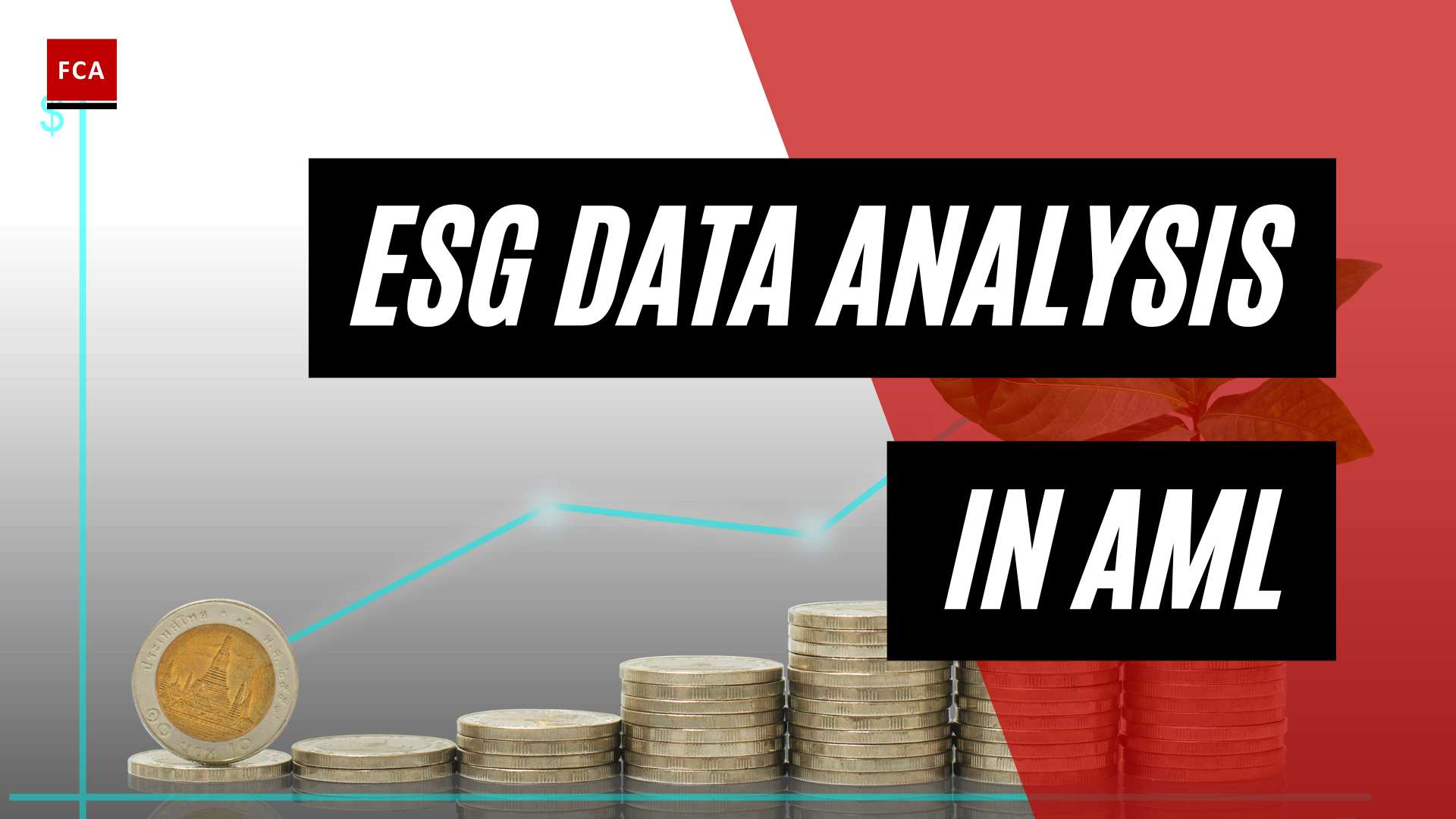Understanding EU AML Directives
To effectively navigate the ever-evolving landscape of anti-money laundering (AML) compliance, it is crucial to have a comprehensive understanding of the European Union (EU) AML directives. These directives serve as the foundation for AML frameworks within EU member states, outlining the obligations and responsibilities of financial institutions and other entities in combatting money laundering and terrorist financing activities.
Introduction to EU AML Directives
The first EU AML directive was adopted by the European Commission in 1990, with the goal of preventing the misuse of the financial system for money laundering purposes. This initial directive established customer due diligence requirements, such as identifying and verifying the identity of clients, monitoring transactions, and reporting suspicious activities (European Commission). Over the years, subsequent directives have expanded and strengthened these requirements, reflecting the continuous efforts to enhance AML measures.
Purpose of EU AML Directives
The primary purpose of EU AML directives is to harmonize and standardize AML policies across EU member states. By establishing a common framework, these directives aim to create a level playing field for financial institutions and other obliged entities, ensuring consistent and effective AML measures throughout the EU. The directives provide guidance on risk assessment, customer due diligence, record-keeping, reporting of suspicious activities, and the establishment of competent authorities for supervision and enforcement.
The EU AML directives also align with international standards, particularly those set by the Financial Action Task Force (FATF). By adhering to these standards, the EU aims to enhance the global fight against money laundering and terrorist financing.
Understanding the evolution of EU AML directives is essential to grasp the current landscape and anticipate future developments. In the next sections, we will explore the key updates in EU AML directives, their impact, the progress and challenges in implementation, and the future outlook for EU AML compliance.
For more information on EU AML legislation and regulatory frameworks, visit our articles on eu aml legislation, eu aml framework, and eu aml policy.
Key Updates in EU AML Directives
To stay informed and compliant with the evolving landscape of anti-money laundering (AML) regulations, it is essential to understand the key updates in the European Union (EU) AML directives. The following directives and regulations have been introduced to strengthen the EU’s AML framework and address emerging risks:
6th Anti-Money Laundering Directive (6AMLD)
The 6th Anti-Money Laundering Directive (6AMLD) introduces several important updates to the EU AML framework. One significant expansion is the inclusion of cryptocurrency service providers and art dealers within the scope of EU AML regulations for the first time. This extension aims to address the emerging risks associated with money laundering in the digital and art market sectors. By incorporating these sectors into the regulatory framework, the EU aims to enhance transparency and combat illicit financial activities.
Directive (EU) 2019/1153
Directive (EU) 2019/1153 is another important update in the EU AML directives. This directive focuses on enhancing the use of financial information for law enforcement purposes. It grants law enforcement authorities direct access to bank-account holder details stored in national centralised registries. This access facilitates better information exchange between authorities and speeds up criminal investigations, aiding in the fight against cross-border crime (European Commission).
The New Regulation on the Traceability of Transfers of Funds (TFR)
The New Regulation on the Traceability of Transfers of Funds (TFR) is set to be enforced from December 2024. This regulation aims to ensure the traceability of crypto-assets transfers and user authentication, aligning with the standards set by the Financial Action Task Force (FATF). By implementing this regulation, the EU aims to address the potential money laundering and terrorist financing risks associated with the use of crypto-assets (European Commission).
The New Regulation on the Anti-Money Laundering Authority (AMLA)
The EU is planning to establish a new EU authority through The New Regulation on the Anti-Money Laundering Authority (AMLA). This authority will be responsible for overseeing AML and countering the financing of terrorism (CFT) supervision. Its primary objectives include ensuring the consistent application of AML/CFT rules by the private sector and fostering cooperation among financial intelligence units (FIUs). By establishing the AMLA, the EU aims to enhance the effectiveness and efficiency of AML/CFT supervision within the EU.
Keeping up with these key updates in EU AML directives is crucial for professionals working in compliance, risk management, anti-money laundering, and anti-financial crime. Understanding and implementing these updates will contribute to maintaining regulatory compliance and effectively combating money laundering and other financial crimes. Stay informed on the latest EU AML legislation and AML regulations in Europe to ensure your organization meets the necessary EU AML compliance requirements within the evolving EU AML framework.
Impact of EU AML Directives
The EU AML directives have had a significant impact on anti-money laundering and counter-terrorist financing (AML/CFT) measures across the European Union. These directives aim to combat financial crimes and protect the integrity of the financial system. Let’s explore the key impacts of these directives.
Strengthening AML/CFT Measures
One of the primary impacts of the EU AML directives is the strengthening of AML/CFT measures. The directives introduce stricter regulations and requirements for financial institutions and designated non-financial businesses and professions (DNFBPs). These entities are mandated to implement robust customer due diligence (CDD) procedures, including identifying and verifying the identity of their clients, monitoring transactions, and reporting suspicious activities.
The EU AML directives also emphasize the importance of risk-based approaches, requiring entities to assess and mitigate the money laundering and terrorist financing risks they face. By implementing these measures, the directives aim to enhance the effectiveness of AML/CFT efforts and reduce the vulnerability of the financial system to illicit activities.
Expansion of Regulatory Scope
The EU AML directives have expanded the regulatory scope to address emerging risks and cover previously unregulated sectors. For example, the 6th Anti-Money Laundering Directive (6AMLD) extends the EU AML regulations to include cryptocurrency service providers and art dealers for the first time. This expansion acknowledges the need to address money laundering risks associated with digital assets and the art market, which have been areas of concern in recent years.
By broadening the regulatory scope, the EU AML directives aim to keep pace with evolving financial landscapes and ensure that entities operating in these sectors adhere to AML/CFT requirements. It helps to close potential loopholes and provides a comprehensive framework to combat money laundering and terrorist financing effectively.
Better Information Exchange and Investigation Speed
The EU AML directives emphasize the importance of information exchange and cooperation among competent authorities, financial intelligence units (FIUs), and law enforcement agencies. The introduction of Directive (EU) 2019/1153 facilitates better information exchange by granting law enforcement direct access to bank-account holder details stored in national centralised registries (European Commission). This streamlines the process of sharing crucial information, expedites investigations, and aids in the fight against cross-border financial crimes.
By improving information exchange and investigation speed, the EU AML directives enhance the effectiveness of AML/CFT efforts across member states. This collaborative approach strengthens the ability to detect, prevent, and deter money laundering and terrorist financing activities.
The EU AML directives have played a vital role in shaping the AML/CFT landscape within the European Union. These directives have not only strengthened AML/CFT measures but also expanded the regulatory scope to address emerging risks. Furthermore, they have facilitated better information exchange and improved investigation speed, enhancing the ability to combat financial crimes effectively. As the EU AML framework continues to evolve, businesses must stay informed about the updates and adapt their AML/CFT controls to ensure compliance with the evolving requirements.
Progress and Challenges in Implementing EU AML Directives
As the European Union (EU) continues to strengthen its fight against money laundering and terrorist financing, the implementation of EU AML directives faces both progress and challenges.
Ongoing Legislative Processes
The EU’s proposed new anti-money laundering and countering the financing of terrorism (AML/CFT) framework is currently progressing through legislative processes. The European Commission, Parliament, and Council are actively negotiating the proposed changes, with broad support from all three parties.
Discussions are underway regarding the remaining elements of the AML/CFT reform package. While progress has been made on certain aspects, such as the Traceability of Transfers of Funds (TFR) regulation and the 6th Anti-Money Laundering Directive (6AMLD), disagreements surrounding the Anti-Money Laundering Authority (AMLA) have slowed down the process. As a result, the final vote on the package by the Parliament and Council may be postponed until the last quarter of 2023 or early 2024, affecting the timeline for the establishment and operations of the AMLA.
Disagreements and Delays
While there is overall support for the AML/CFT reform package, there are some differences in opinions and proposals between the Council and the Parliament. The Council has suggested a more robust AMLA with direct enforcement powers and supervision over riskier financial institutions, while the Parliament has recommended even stricter and broader requirements.
These disagreements have contributed to delays in the implementation process. However, negotiations are ongoing, with additional sessions planned for further discussions. The aim is to reach a consensus and ensure that the final legislation effectively addresses gaps in combating money laundering, terrorist financing, and evasion of sanctions within the EU (European Parliament).
Compliance Considerations for Businesses
As EU AML directives continue to evolve, businesses operating within the EU must stay informed and adapt their compliance practices accordingly. It is crucial for businesses to closely monitor the progress of the legislative processes and be prepared to implement any new requirements that may arise.
Compliance considerations for businesses include:
- Staying updated: Regularly review updates and developments related to EU AML directives to ensure ongoing compliance with the latest regulations and obligations.
- Enhancing due diligence: Strengthen customer due diligence processes to identify and mitigate money laundering and terrorist financing risks effectively.
- Implementing robust internal controls: Establish and maintain internal policies, procedures, and systems to prevent and detect potential money laundering activities.
- Investing in training and awareness: Provide adequate training and awareness programs to employees to ensure they are well-informed and knowledgeable about AML compliance requirements.
- Engaging with regulators: Foster a collaborative relationship with regulatory authorities, actively participating in consultations and sharing insights to contribute to the development of effective AML frameworks.
By proactively addressing compliance considerations, businesses can navigate the evolving landscape of EU AML directives and contribute to the overall efforts in combating money laundering and terrorist financing.
Evolution of EU AML Directives
To understand the current state of EU AML directive updates, it’s essential to trace the evolution of these directives over the years. The European Union has implemented several directives to combat money laundering and enhance anti-money laundering (AML) measures. Let’s take a closer look at some key directives:
First Money Laundering Directive (1AMLD)
The First Money Laundering Directive (1AMLD) was approved by the European Council of Ministers on June 10, 1991. Member states were required to integrate it into national laws by April 1, 1994. The primary objective of 1AMLD was to establish money laundering as a criminal offense and assign AML responsibilities to certain sectors, primarily focusing on banks as obliged entities. However, this directive faced criticism for its narrow focus and limited scope, prompting the need for improvements in EU AML policies.
Second Money Laundering Directive (2AMLD)
Following the 9/11 terrorist attacks, the Second Money Laundering Directive (2AMLD) was established in December 2001. Building on the foundations of 1AMLD, 2AMLD expanded the scope of predicate offenses subject to money laundering regulations. It included stricter regulations for additional obliged entities like lawyers and emphasized reporting suspicious activities to the Financial Intelligence Unit (FIU). The aim was to address gaps in the initial directive and enhance AML measures within the EU (Idenfy).
Fourth Money Laundering Directive (4AMLD)
Approved by the EU in 2015, the Fourth Money Laundering Directive (4AMLD) required member states to implement it by June 2017. 4AMLD built upon the previous directives and aligned with the 2012 Financial Action Task Force (FATF) recommendations. It expanded AML obligations to sectors like gambling and emphasized transparency in addressing issues such as corruption and tax evasion. Additionally, 4AMLD introduced new requirements related to Ultimate Beneficial Owners (UBOs) and expanded Enhanced Due Diligence (EDD) for Politically Exposed Persons (PEPs). The directive aimed to enhance AML efforts and ensure greater transparency in corporate structures (Idenfy).
As the EU continues to strengthen its AML framework, it’s important for professionals working in compliance, risk management, and anti-money laundering to stay informed about the EU AML directive updates. These updates aim to address emerging risks and align with international standards, ultimately contributing to more robust AML systems within the European Union.
Future Outlook for EU AML Compliance
As the fight against money laundering and terrorist financing continues, the future outlook for EU AML compliance is focused on implementing stricter rules, harmonizing anti-money laundering systems, and introducing organizational changes in the AML/CFT framework.
Stricter Rules to Combat Money Laundering
Recognizing the need to address gaps in combating money laundering, terrorist financing, and evasion of sanctions within the EU, MEPs have approved stricter rules to enhance the effectiveness of AML measures. These measures aim to prevent fraudsters, organized crime, and terrorists from legitimizing their proceeds through the financial system. The European Council and Parliament reached a provisional agreement on parts of the anti-money laundering package, which will provide greater protection to EU citizens and the financial system against money laundering and terrorist financing (European Parliament, European Council).
The new anti-money laundering package will harmonize rules across the EU, closing potential loopholes exploited by criminals to launder illicit proceeds or finance terrorist activities through the financial system. This harmonization will create a more robust framework for combating money laundering and terrorist financing, ensuring a coordinated and effective response across member states.
Harmonizing Anti-Money Laundering Systems
One of the key objectives of the new anti-money laundering package is to harmonize anti-money laundering systems across the EU. This harmonization aims to standardize AML regulations and procedures, eliminating inconsistencies and closing potential loopholes. By establishing a common framework, the EU seeks to enhance the effectiveness of AML efforts and facilitate better information exchange among member states. Harmonization will also simplify compliance for businesses operating across multiple EU jurisdictions and improve the overall resilience of the EU’s financial system (European Council).
Organizational Changes in AML/CFT Framework
The new anti-money laundering package introduces organizational changes within the AML/CFT framework. The rules applicable to the private sector will be transferred to a new regulation, while the directive will focus on organizing institutional anti-money laundering and counter-terrorist financing systems at the national level in EU member states. This reorganization aims to improve the organization and coordination of national systems against money laundering and terrorist financing, streamlining processes and enhancing overall effectiveness (European Council).
These organizational changes, along with the harmonization of AML systems, will contribute to a more robust and comprehensive approach to combating money laundering and terrorist financing within the EU. By strengthening the AML/CFT framework, the EU aims to stay ahead of evolving threats, protect the integrity of its financial system, and ensure the safety of its citizens.
As the implementation of these new measures progresses, businesses operating within the EU will need to stay informed and adapt their AML compliance programs accordingly. It is essential to monitor updates in EU AML legislation and EU AML framework, seek guidance from regulatory authorities, and implement necessary changes to ensure continued compliance with the evolving EU AML regulatory requirements. By proactively addressing these changes, businesses can effectively navigate the evolving landscape of AML regulations in Europe and contribute to the collective effort in combating money laundering and terrorist financing.









